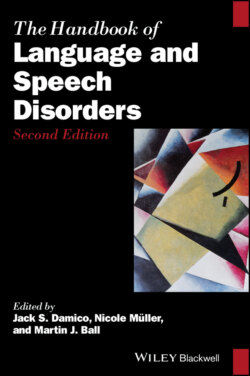Читать книгу The Handbook of Language and Speech Disorders - Группа авторов - Страница 30
2.4 Identifying an MMI Curriculum
ОглавлениеHaving a mind for diversity and, by extension, being able to provide apposite and applicable clinical service delivery requires a specification of what counts as MMI‐related know‐how and aptitude. Such specification criteria include (a) knowledge of facts and theory, (b) an understanding of how such knowledge relates to applications, and (c) a capacity for intercultural communication, that is, intercultural competence or responsiveness. To elucidate, factual information entails numerical data (statistics) on patterns of globalization, demographics, and how economics and politics affect health‐related policies, aspects of which are rudimentarily showcased in Section 2.2. Theoretical information (Section 2.5) includes a demarcation of principal themes in the following topics: culture and cultural diversity, language and linguistic diversity, learner ability, bilingualism, accent, and a transparent link that connects these to SLDs. Applications (Section 2.6) include diffusion of research advances and their implications for assessment and therapy methods, accent modification, and the function of interpreters and/or bilingual service providers. Last, intercultural competence (Section 2.7) involves learning to deal with universal or unique (to specific groups) cultural characteristics, alongside investigating SLP attitudes, and finding ways to minimize cultural barriers (Kim, 2019) and unconscious bias in SLP–client interaction. These are outlined in more detail in the following sections.
